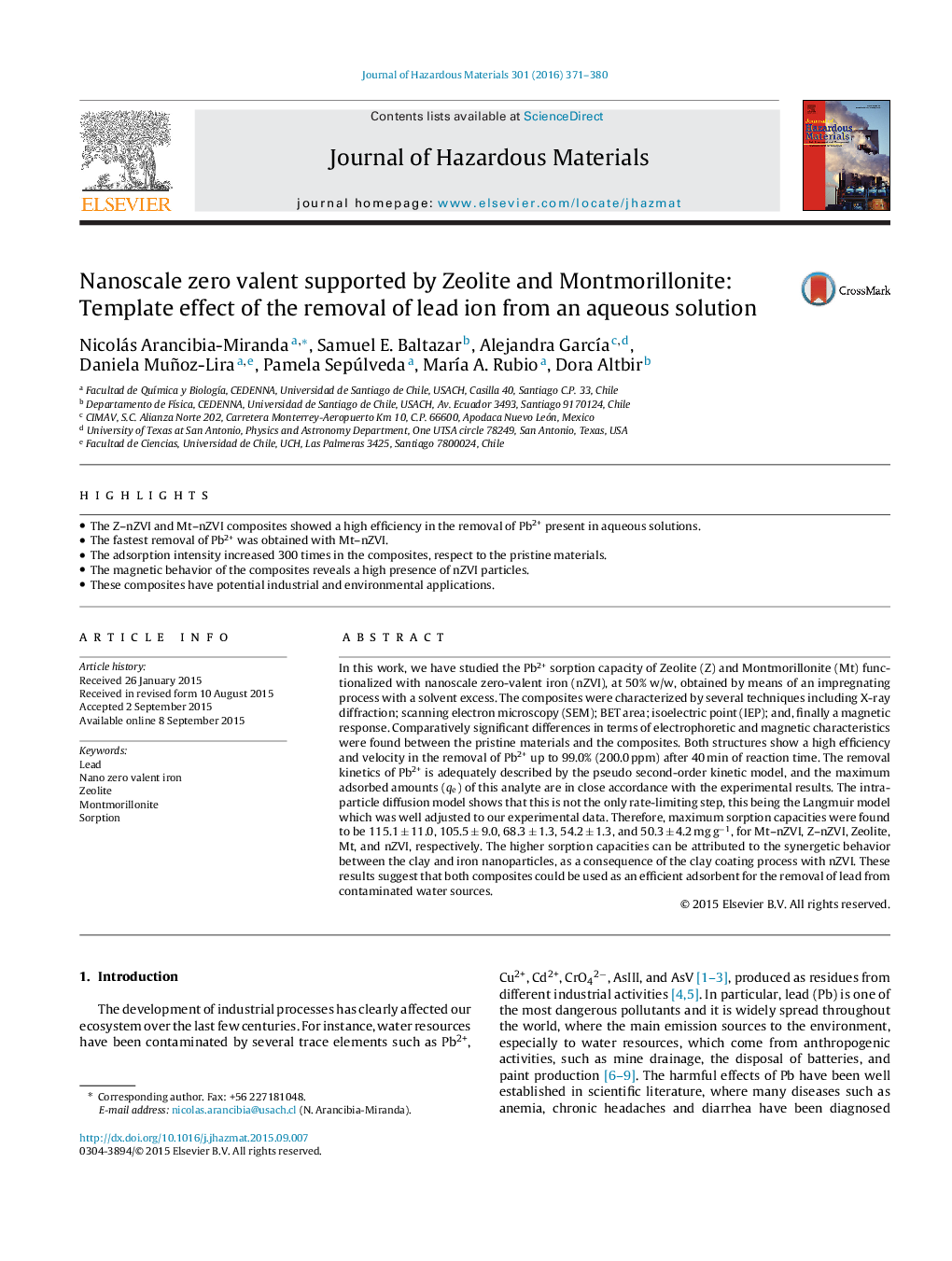| Article ID | Journal | Published Year | Pages | File Type |
|---|---|---|---|---|
| 575808 | Journal of Hazardous Materials | 2016 | 10 Pages |
Abstract
In this work, we have studied the Pb2+ sorption capacity of Zeolite (Z) and Montmorillonite (Mt) functionalized with nanoscale zero-valent iron (nZVI), at 50% w/w, obtained by means of an impregnating process with a solvent excess. The composites were characterized by several techniques including X-ray diffraction; scanning electron microscopy (SEM); BET area; isoelectric point (IEP); and, finally a magnetic response. Comparatively significant differences in terms of electrophoretic and magnetic characteristics were found between the pristine materials and the composites. Both structures show a high efficiency and velocity in the removal of Pb2+ up to 99.0% (200.0 ppm) after 40 min of reaction time. The removal kinetics of Pb2+ is adequately described by the pseudo second-order kinetic model, and the maximum adsorbed amounts (qe) of this analyte are in close accordance with the experimental results. The intraparticle diffusion model shows that this is not the only rate-limiting step, this being the Langmuir model which was well adjusted to our experimental data. Therefore, maximum sorption capacities were found to be 115.1 ± 11.0, 105.5 ± 9.0, 68.3 ± 1.3, 54.2 ± 1.3, and 50.3 ± 4.2 mg gâ1, for Mt-nZVI, Z-nZVI, Zeolite, Mt, and nZVI, respectively. The higher sorption capacities can be attributed to the synergetic behavior between the clay and iron nanoparticles, as a consequence of the clay coating process with nZVI. These results suggest that both composites could be used as an efficient adsorbent for the removal of lead from contaminated water sources.
Related Topics
Physical Sciences and Engineering
Chemical Engineering
Chemical Health and Safety
Authors
Nicolás Arancibia-Miranda, Samuel E. Baltazar, Alejandra GarcÃa, Daniela Muñoz-Lira, Pamela Sepúlveda, MarÃa A. Rubio, Dora Altbir,
